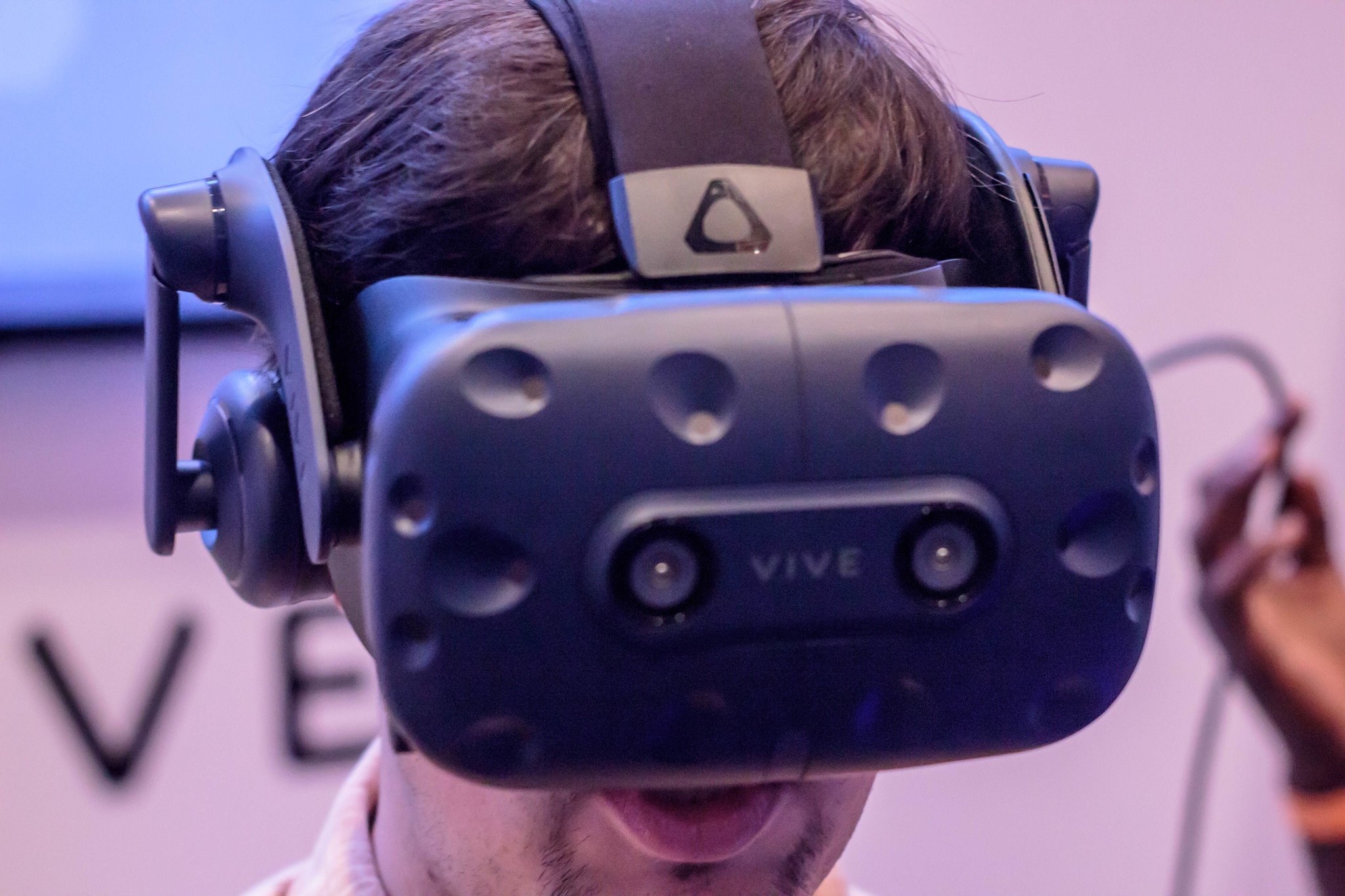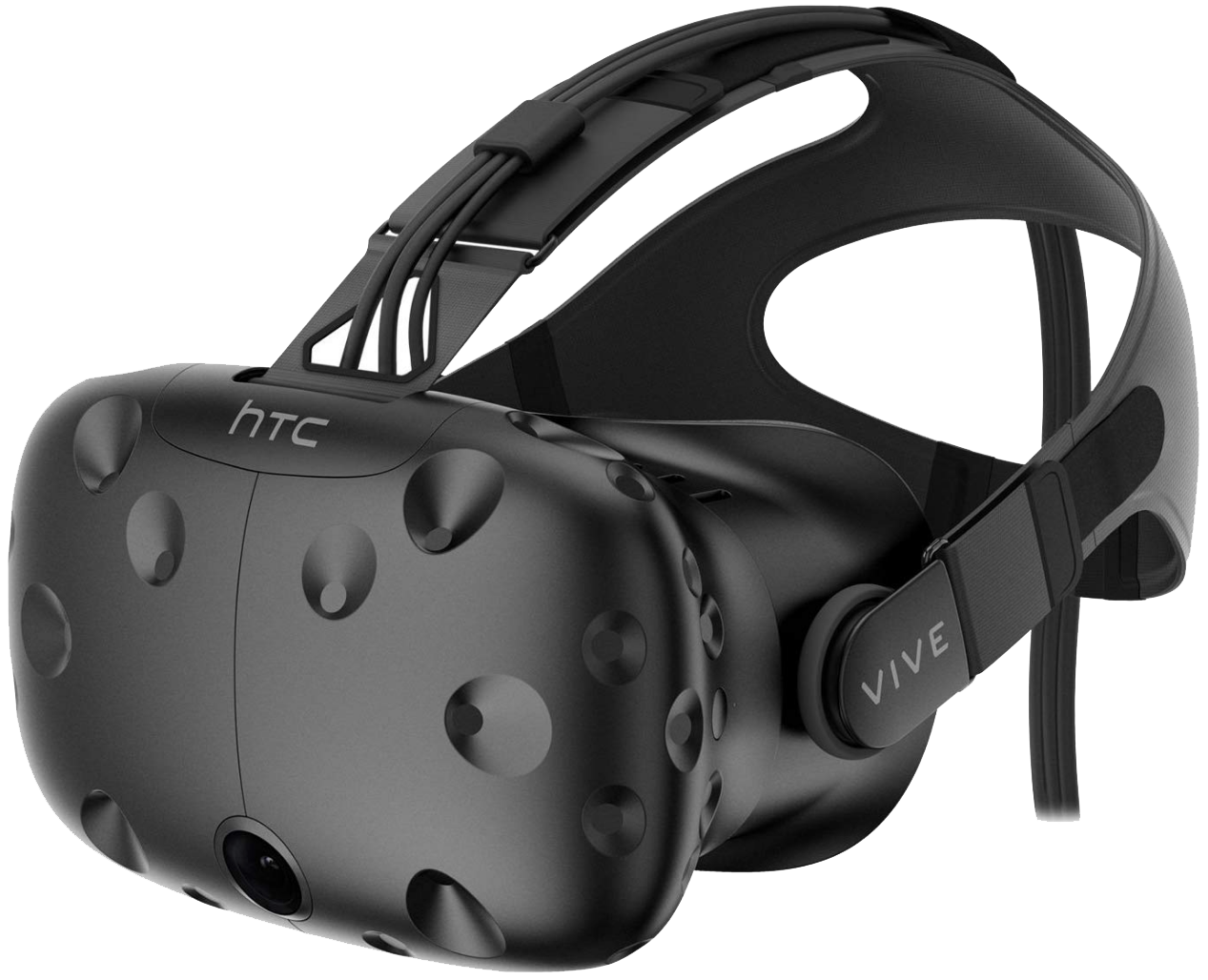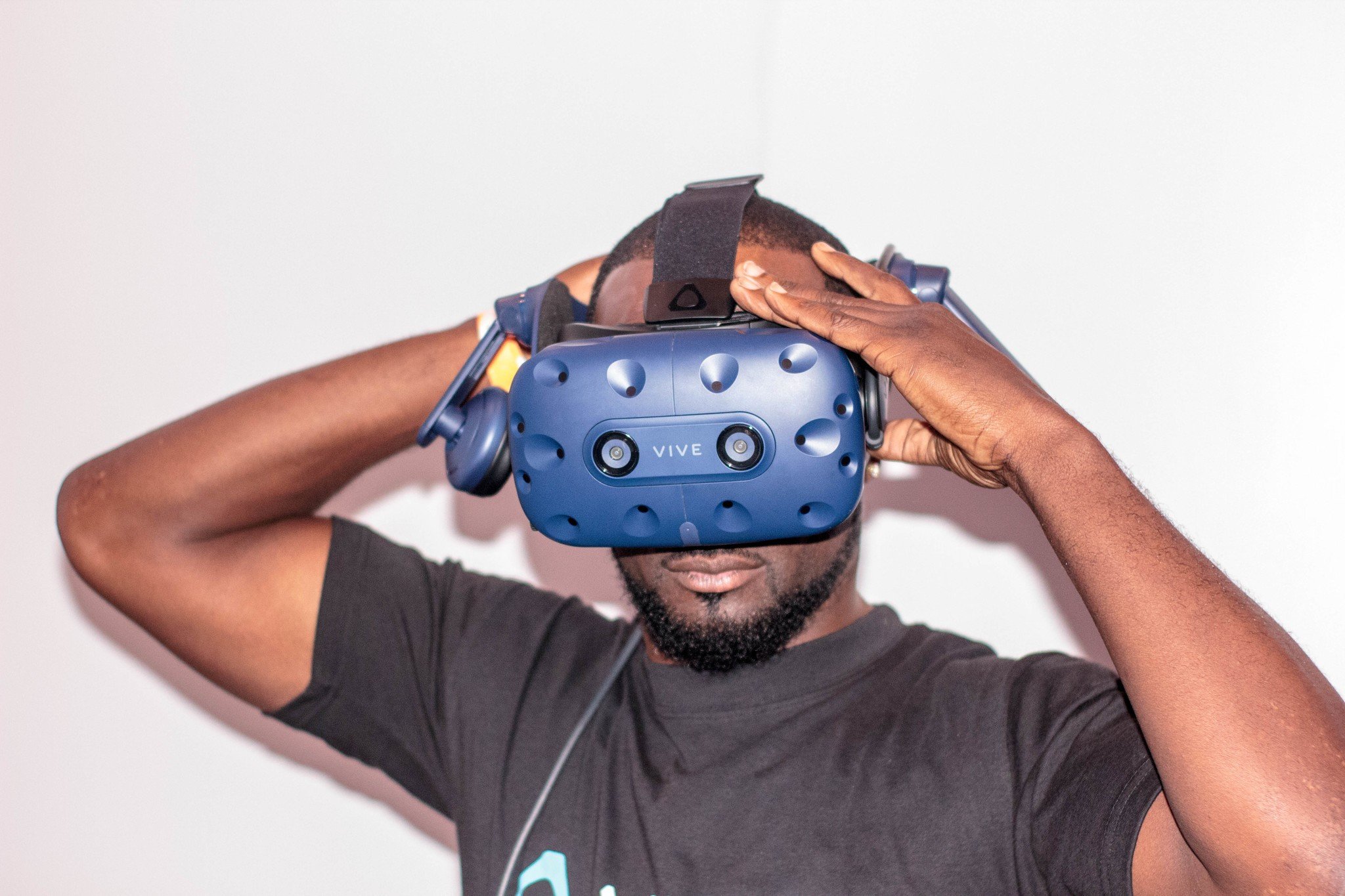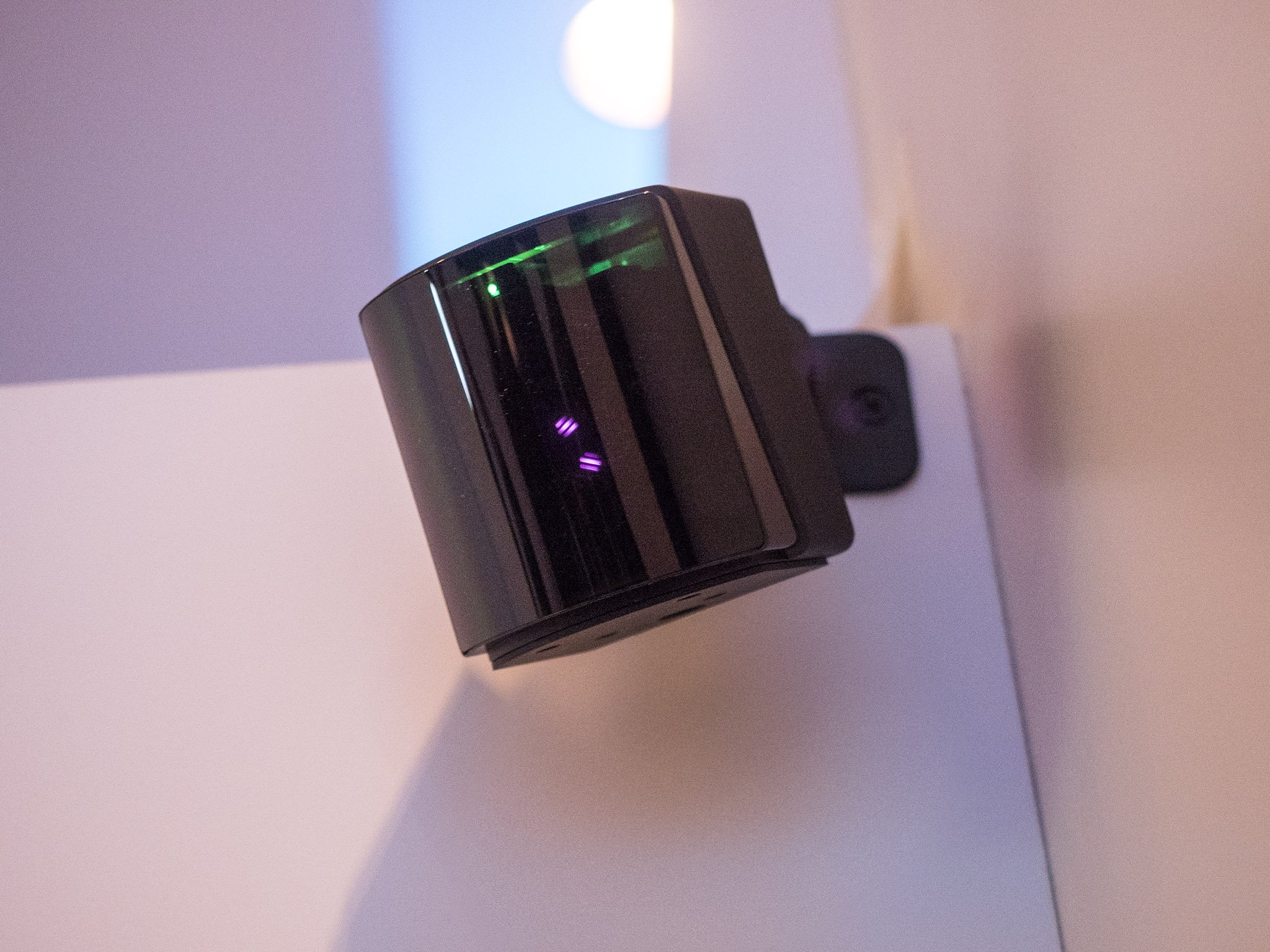HTC Vive vs. HTC Vive Pro: Which should you buy?


Ideal for most VR gamers
The HTC Vive is a proven VR system that includes motion controllers and precise external tracking. Dual AMOLED displays have a combined 2160x1200 resolution, 90Hz refresh rate, and 100-degree field-of-view (FOV) for excellent picture. It costs far less than a Vive Pro, making it a better choice for most people.
Pros
- Much cheaper price
- Precise room-scale external tracking
- Wireless adapter available
- Dual AMOLED displays
- Not as taxing on PC hardware
Cons
- Lower resolution displays
- Not quite as comfortable

Better for VR power users
The HTC Vive Pro has dual AMOLED displays with a combined 2880x1600 resolution, giving it a much clearer picture than the original Vive. The robust headband includes built-in headphones and updated external Lighthouses allow for a larger play area. With the elevated price in mind, it's the better option for developers and power users.
Pros
- Higher-res displays for better picture
- Comfortable build with built-in headphones
- Updated tracking for larger play area
- Wireless adapter available
Cons
- Far more expensive
- Requires beefier PC hardware
The HTC Vive and Vive Pro are cut from the same cloth, but the significant price and hardware differences make them ideal for different crowds. If you're a regular VR gamer, the standard Vive makes much more sense, while the Vive Pro is a better fit for developers, power users, or VR veterans who want the best.
HTC Vive vs. HTC Vive Pro tech specs
Here's a breakdown of the specs found in each VR system.
| Header Cell - Column 0 | HTC Vive | HTC Vive Pro |
|---|---|---|
| Display | Dual AMOLED 3.5 inches | Dual AMOLED 3.5 inches |
| Resolution | 2160x1200 (combined) | 2880x1600 (combined) |
| PPI | 448 | 615 |
| FOV | 110 degrees | 110 degrees |
| Refresh rate | 90Hz | 90Hz |
| IPD | Manual | Manual |
| Audio | 3.5mm jack | Integrated |
| Tracking | External SteamVR Tracking 1.0 | External SteamVR Tracking 2.0 |
Design and tracking
The HTC Vive Pro builds on the original Vive's design, and the result is something that looks bulkier. Instead of a basic Velcro headband to keep the displays on your face, the Vive Pro includes a plastic headstrap (with an adjustment knob on the back) that includes built-in audio and plenty of padding. The face gasket has about 24% more surface to it for less stress on your cheeks and brow, and the overall design allows the headset's weight to be distributed more evenly across your head for a more comfortable fit. Built-in headphones are better than you'll get even from the Vive's optional Deluxe Audio Strap accessory.
With the original Vive you can plug in your own headphones through a 3.5mm audio jack, giving you some extra options. For the same setup on a Vive Pro, a USB-C to 3.5mm audio adapter or a pair of quality USB-C headphones are necessary.
With both headsets you are required to set up two external Lighthouses for room-scale tracking. Neither headset offers internal tracking like the Oculus Rift S, though many will argue that tracking is more precise with external hardware. The Vive uses original Lighthouse base stations with SteamVR Tracking 1.0, while the Vive Pro includes updated Lighthouse base stations with SteamVR Tracking 2.0. The biggest difference you'll no doubt find is that the newer hardware allows for a larger play space. Note that the Vive Pro can work with the 1.0 base stations, though the original Vive can't work with the 2.0 base stations.
A cable tether back to a PC is the stock way to use both the Vive and Vive Pro. The former headset uses HDMI, USB-A 2.0, and Bluetooth to communicate, while the latter headset uses USB-A 3.0, DisplayPort 1.2, and Bluetooth. HTC has built an optional wireless adapter for the Vive and Vive Pro which removes the necessity of a cable tether.
As for controllers, the Vive Pro's have a blue color to match the head-mounted display, though they're essentially the same as the original Vive's controllers save for compatibility with SteamVR 2.0 tracking.
All the latest news, reviews, and guides for Windows and Xbox diehards.
Display
The biggest and most important difference between these two HMDs is the display. You're still getting dual 3.5-inch AMOLED displays in both headsets, though the Vive Pro's resolution has been bumped up to a combined 2880x1600 (1440x1600 in each eye) with 615 PPI. The original Vive sits at a combined resolution of 2160x1200 (1080x1200 in each eye) with 448 PPI.
If you've used a standard Vive, you might have noticed a screen-door effect (SDE) that looks like a grid over the picture you're seeing. The Vive Pro's higher resolution and PPI do a lot to fix the issue, though your PC will have to work harder. The Vive's displays are still perfectly functional and offer a stellar gaming experience, though anything seen through the Vive Pro is immediately going to look more crisp and clear. With both headsets you can expect a 90Hz refresh rate and 110-degree FOV.
Both headsets also include the ability to manually adjust interpupillary distance (IPD), something for which the Rift S was criticized for not including. No matter the spacing between your eyes, you should be able to find a comfortable fit with either headset.
Price and PC requirements
Other than the difference in ports required on your PC to connect the VR systems, recommended PC specs are a bit different. The Vive Pro should be paired with at least a NVIDIA GTX 1070, NVIDIA Quadro P5000, or AMD Radeon Vega 56 graphics card (GPU), while the standard Vive should have at least a NVIDIA GTX 1060 or AMD Radeon RX 480 behind it.
For a processor (CPU), at least an Intel Core i5-4590 or AMD FX 8350 is recommended with both headsets, and you should have at least 4GB of RAM installed. Of course, any hardware more powerful is only going to improve your VR experience.
If your PC has seen better days, you're no doubt going to have a much better time with a standard Vive, while a performance rig with newer hardware will have an easier time keeping up with the Vive Pro's higher-end design.
Price is no doubt going to play a huge role in your final decision, as a full Vive Pro setup with controllers and base stations costs more than twice as much as a full Vive package. Any casual VR users out there should get as much enjoyment from a standard Vive as they would a Vive Pro, and you'll have far more money left over to spend on, say, a new GPU for your PC.
If you're a current Vive user and would like to upgrade to the Vive Pro and continue using the original base stations and controllers, expect to pay about $599 for just the HMD.
The standard Vive is ideal for regular VR users
The Vive's display doesn't have as high a resolution as the Vive Pro and it's not as comfortable to wear for long periods of time, but if you're just looking for a casual VR system to use for gaming, it's still going to rock your world. External base stations offer precise roomscale tracking, and the price is much, much more reasonable.
The Vive Pro is the right choice for professionals and VR veterans
The Vive Pro's elevated price immediately puts it in the realm of professional developers and VR veterans who only want the best. It has a comfortable headstrap, built-in audio, high-res display, and updated tracking system for a larger roomscale play area. It does, however, require beefier PC hardware.

Cale Hunt brings to Windows Central more than nine years of experience writing about laptops, PCs, accessories, games, and beyond. If it runs Windows or in some way complements the hardware, there’s a good chance he knows about it, has written about it, or is already busy testing it.



